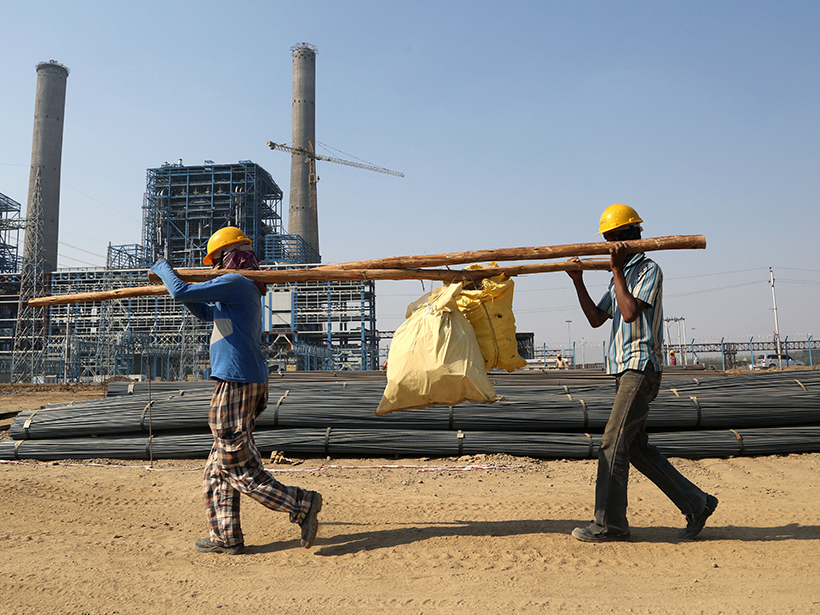Source: Earth’s Future
Less than 2 years ago, officials from all 196 countries met in Paris, France, and agreed to limit their emissions—enough, collectively, to keep the annual rise in temperature well below 2°C (3.6°F).
The Paris Agreement is a historic, powerful piece of international legislation. But achieving its goals requires the participation of every country, each of which has its own individual needs and demands.
For example, India has pledged to produce at least 40% of its power from non–fossil fuel sources and reduce its emissions intensity (emissions per unit of gross domestic product) by 35% by 2030. But with more than 20% of its population (roughly 300 million people out of 1.3 billion) lacking reliable access to electricity, the country has a vested interest in expanding its energy infrastructure to improve both its economic growth and the lives of its people.
Over the past decade one of the ways India has expanded its energy infrastructure is through the construction of coal-fired power plants. The country has large coal reserves (an estimated 87 billion metric tons) and, as of 2015, relies heavily on coal for 70% of its electricity and 44% of its overall energy.
It’s clear that India is a pivotal player in whether the Paris Agreement target is achieved. Coal combustion is the largest source (more than 40%) of carbon dioxide emissions worldwide. Carbon dioxide and other greenhouse gases trap heat in the atmosphere, warming the Earth and causing other climate-related changes.
Shearer et al. decided to find out exactly what the effect of India’s planned power plants might be. They collected public data on all operational, retired, and proposed coal-fired power plants in India between January 2010 and May 2016.
They found that between plants that have been proposed and are currently under construction, the country would have the capacity to generate an additional 243 gigawatts of coal-fired energy. These plants would increase India’s overall coal capacity by 123%.
This finding means that if the country fulfills its goal of having at least 40% of its power capacity be non–fossil fuel sources by 2030, it will need to have an energy surplus that far exceeds projected demand. The researchers believe this surplus would lead to coal plants closing or operating at low capacities or else preclude the new non–fossil fuel sources from being used at all.
Furthermore, the researchers calculated that the future emissions from the proposed coal plants would exceed India’s climate targets, causing India to break its pledge to reduce its emissions intensity by 35% by 2030.
This study points out specific actions that India must take to meet its own goals and uphold its end of the Paris Agreement. These actions, they note, would need to involve ceasing development of most of its under-construction and proposed coal-fired power plants. (Earth’s Future, https://doi.org/10.1002/2017EF000542, 2017)
—Sarah Witman, Freelance Writer
Citation:
Witman, S. (2017), India’s plans for coal clash with Paris Agreement, Eos, 98, https://doi.org/10.1029/2017EO081287. Published on 07 September 2017.
Text © 2017. The authors. CC BY-NC-ND 3.0
Except where otherwise noted, images are subject to copyright. Any reuse without express permission from the copyright owner is prohibited.

